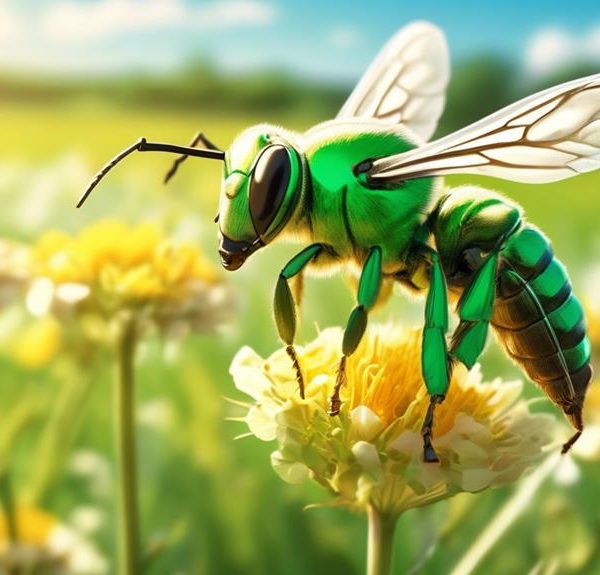Buzz into the captivating world of sweat bees, exploring their colorful diversity, unique behaviors, and crucial role in our ecosystem.
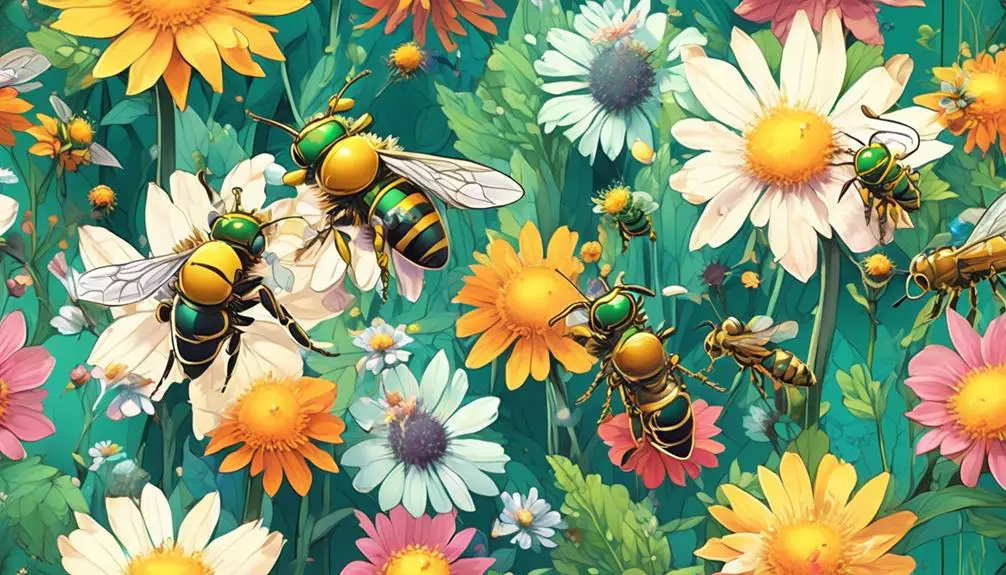
Different Types of Sweat Bees
You might have seen them, you might have heard about them, or you might even have been stung by them – but do you really know about the various types of sweat bees?
These intriguing insects, commonly known as sweat bees due to their attraction to human sweat, comprise more than 1000 species across the globe. From the vibrant Metallic Green Sweat Bee to the elusive Dark Sweat Bee and the fascinating Alkali Sweat Bee, each species has unique traits and behaviors that contribute to their survival and importance in pollination.
As we explore these species further, you'll find there's much more to these tiny creatures than meets the eye, raising questions about their role in our ecosystem that you'll surely want answered.
Key Takeaways
- There are over 1000 species of sweat bees worldwide.
- Different species of sweat bees have different nesting habits.
- Sweat bees, including Alkali Sweat Bees, contribute to the pollination of wildflowers and commercial crops.
- Sweat bees are effective pollinators in various climates and environments.
Understanding Sweat Bee Behavior
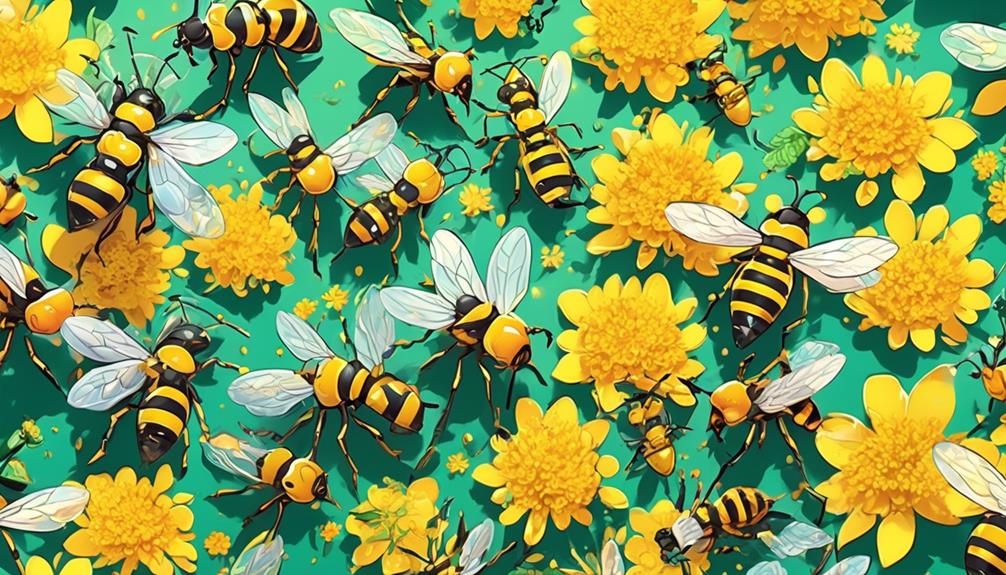
Diving into the world of sweat bees, you'll quickly notice their unique behavior, often attracted to human perspiration, hence their name. These tiny bees aren't biting you out of malice, they're just after salt. It's their key survival tactic.
However, don't let their name fool you. They aren't just attracted to sweat. They're significant pollinators, buzzing from flower to flower, helping plants reproduce. You'll often find them in gardens, parks, and meadows, doing their part in preserving the ecosystem.
While sweat bees are typically non-aggressive, they can sting if threatened or trapped. You'll feel a slight pinch, nothing more. Female sweat bees are the ones capable of stinging, while the males are harmless.
Sweat bee behavior varies by species as well. Some species are solitary, each female building her own nest. Others live in small communal groups where they share a nest but each female cares for her own offspring. Still others form colonies with a single reproducing queen, much like honeybees or ants.
Understanding their behavior can help you coexist with these tiny creatures, appreciating their role in our environment.
The Metallic Green Sweat Bee

Have you ever spotted a tiny, jewel-like creature buzzing around your garden? That's likely the Metallic Green Sweat Bee, a stunning species known for its vibrant hue. A member of the Agapostemon genus, this bee's metallic green or blue body is a sight to behold. They're not just pretty to look at, though; they're also crucial for plant pollination.
You'll often find them inhabiting your garden or meadow during spring and summer. They're solitary creatures, meaning each female has her own underground nest. But don't worry, they're not aggressive. They'll only sting if handled roughly or threatened.
Their name might sound a bit off-putting, but it's derived from their attraction to human sweat. It's not that they enjoy gym sessions with you; they're simply after the salt in your sweat.
It's important to note that while they're small, their impact on our ecosystem is immense. They're one of nature's best pollinators, so if you see one, consider it a sign of a healthy environment. You can support these little green wonders by planting native flowers and reducing your use of pesticides. Remember, they're more than just a pretty face; they're hardworking garden allies.
The Dark Sweat Bee Species
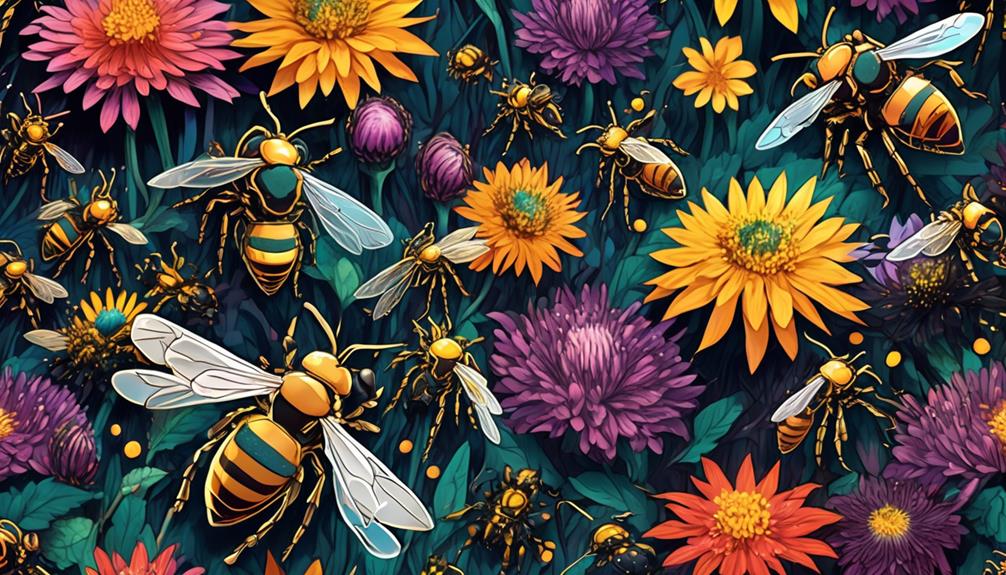
While the Metallic Green Sweat Bee dazzles with its vibrant colors, don't overlook the Dark Sweat Bee species, equally crucial pollinators that play their part in maintaining our ecosystem.
Dark Sweat Bees, or Lasioglossum, are renowned for their black or brown body, which helps them blend into their surroundings and evade predators.
Like their brightly colored cousins, Dark Sweat Bees are integral to our environment. You might be wondering, what makes them so important? Let's break it down:
- Pollination: They're efficient pollinators of crops and wild plants, transferring pollen from male to female flower parts.
- Biodiversity: Their activity promotes plant diversity, which in turn supports a range of wildlife.
- Food Production: They indirectly contribute to our food supply, as plants they pollinate often become food sources for other insects and animals.
Examining the Alkali Sweat Bee
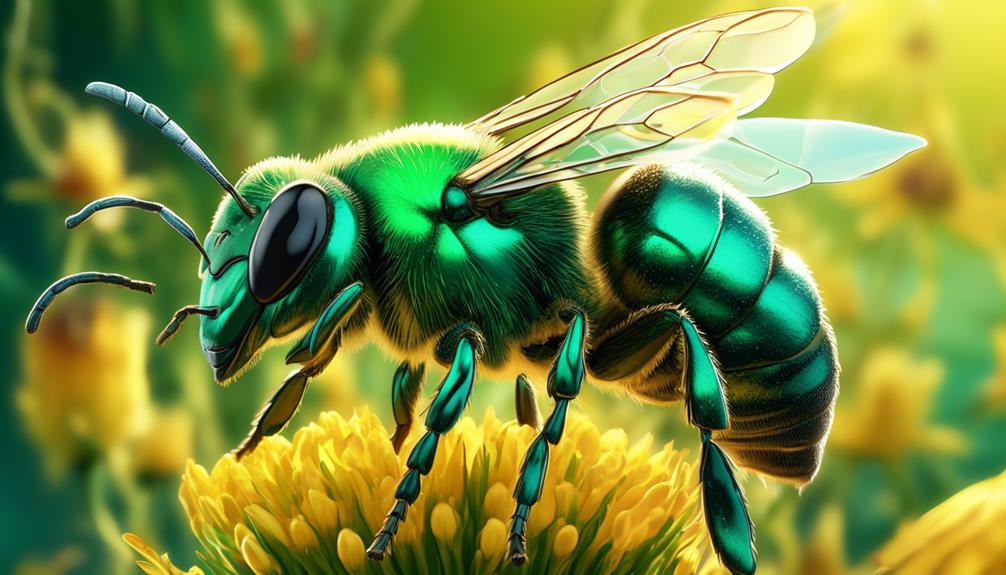
Moving on from the Dark Sweat Bees, let's turn our attention to the Alkali Sweat Bee, a fascinating species that thrives in alkaline habitats. These tiny critters, known scientifically as Halictus farinosus, are found in areas with salty, alkaline soil – a rather unique choice of home, wouldn't you say? They're especially common in the western parts of North America.
You'll recognise Alkali Sweat Bees by their distinct metallic green or blue sheen. But don't mistake them for their larger, more aggressive cousins, the Dark Sweat Bees. Alkali Sweat Bees are relatively docile. They're also solitary creatures, preferring to go about their bee business alone.
Importance of Sweat Bees in Pollination
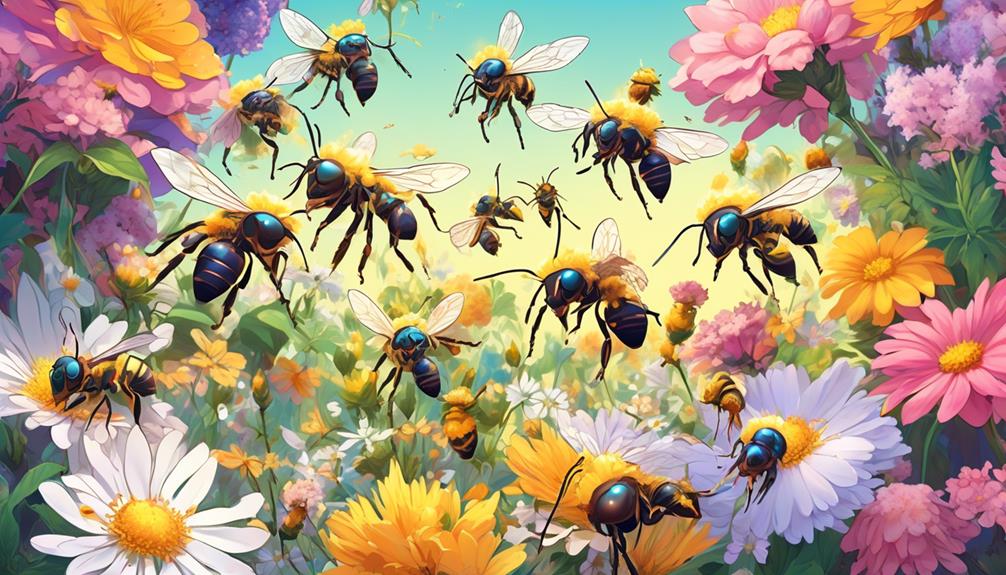
Despite their small size, sweat bees like the Alkali play a crucial role in the pollination process, ensuring the continuation of diverse plant species. You might think their size would limit their effectiveness, but that's just not the case. They're as important as their bigger counterparts, if not more so.
Sweat bees are huge contributors to the pollination of both wildflowers and commercial crops. They're also quite adaptable, able to pollinate in various climates and environments. So, why are they so effective?
- Proximity to Flowers: Sweat bees are known to nest close to vegetation, meaning they're always near an abundant food source and can quickly assist in pollination.
- Variety of Flowers: Sweat bees aren't picky eaters. They'll visit an array of flowers, spreading pollen far and wide.
- Active Throughout the Season: Unlike some bees, sweat bees are active all season, providing consistent pollination.
Conclusion
In conclusion, sweat bees like the Metallic Green, Dark, and Alkali species are vital players in pollination. Despite their tiny size, they're champions in maintaining biodiversity. They're drawn to your sweat, but don't worry, they're generally harmless.
So next time you see a sweat bee buzzing around, let it be. It's likely just doing its part in keeping our ecosystem thriving. Remember, every bee, including the sweat bee, counts in the grand scheme of things.


